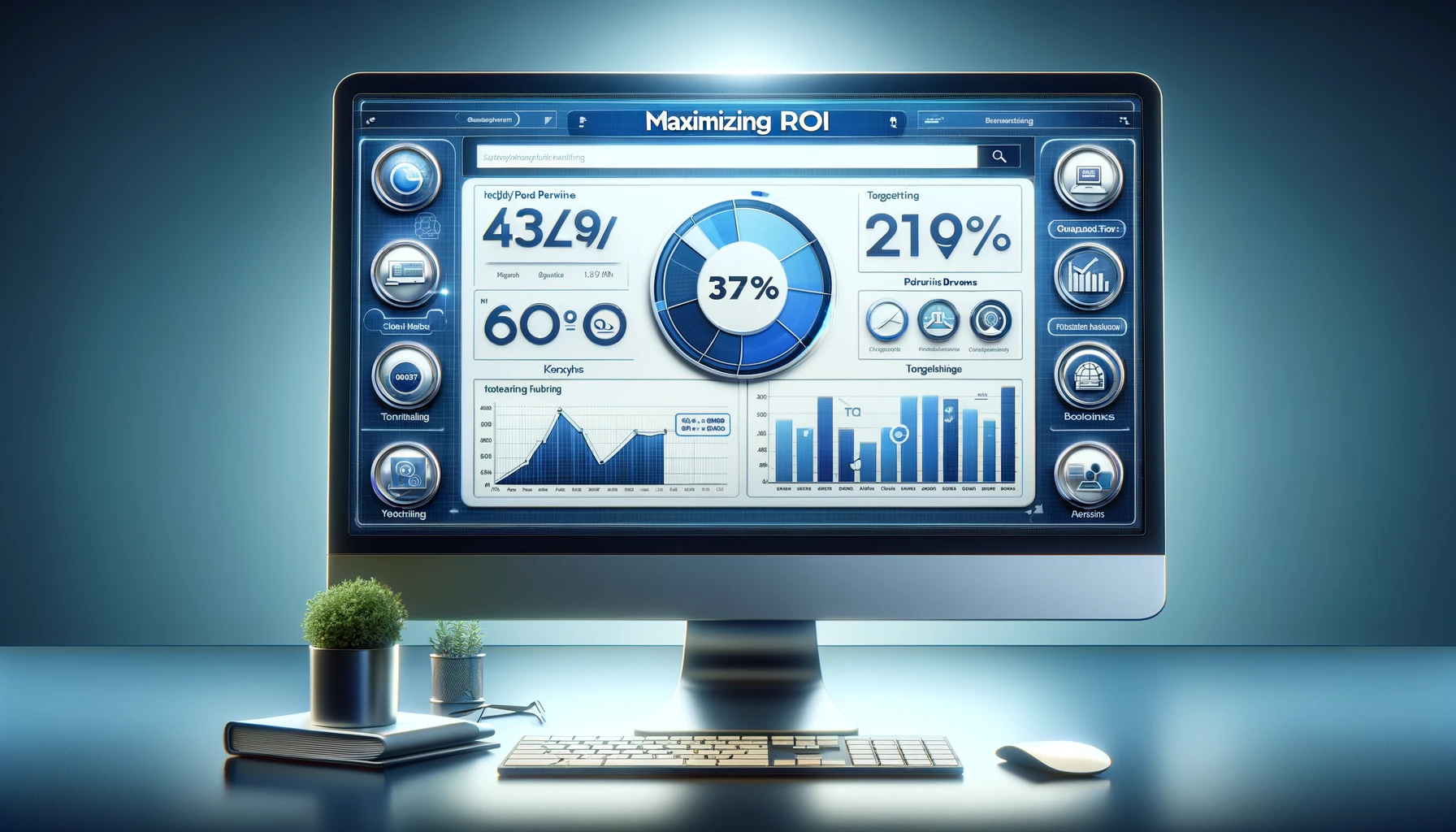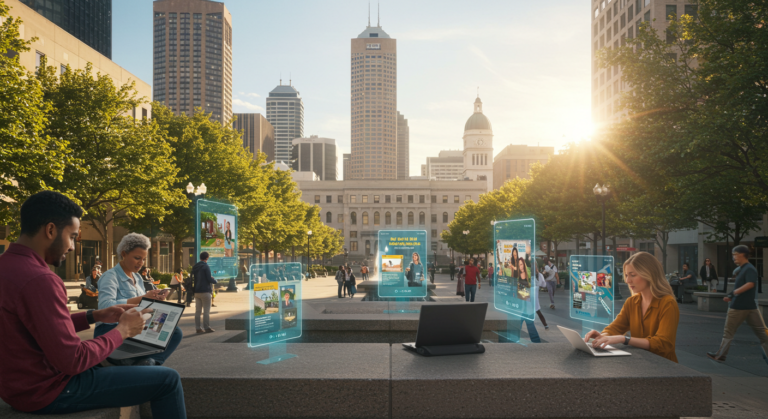Maximize ROI with Effective PPC Advertising
In today’s digital landscape, businesses are constantly seeking ways to enhance their online presence and maximize return on investment (ROI). Pay-per-click (PPC) advertising has emerged as a powerful tool to achieve these goals. However, merely running PPC campaigns is not enough; the key lies in optimizing these campaigns to ensure maximum efficiency and profitability. In this blog post, we will delve into strategies that can help you maximize ROI with effective PPC advertising, providing you with actionable insights and examples to understand better and implement these techniques.
Understanding PPC Advertising
PPC advertising is a model of Internet marketing in which advertisers pay a fee each time one of their ads is clicked. Essentially, it’s a way of buying visits to your site rather than attempting to earn those visits organically. Search engine advertising is one of the most popular forms of PPC, allowing advertisers to bid for ad placement in a search engine’s sponsored links when someone searches for a keyword that is related to their business offering.
The Importance of ROI in PPC Advertising
ROI is a critical metric in PPC advertising as it measures the return on the money spent on advertising campaigns. A high ROI indicates that the PPC campaigns are effective, yielding more revenue than the cost incurred. Conversely, a low ROI signals inefficiencies and the need for campaign optimization. The goal is to spend wisely and generate substantial returns, ensuring that every dollar invested in PPC advertising contributes to the overall profitability of the business.
Keyword Research and Selection
One of the foundational steps in optimizing PPC campaigns is conducting thorough keyword research. Keywords are the terms or phrases that potential customers use when searching for products or services. Selecting the right keywords is crucial as it determines the relevance and reach of your ads. Utilize tools like Google Keyword Planner, SEMrush, and Ahrefs to identify high-performing keywords that align with your business objectives.
Tips for Effective Keyword Research:
- Understand User Intent: Focus on keywords that match the search intent of your target audience. Consider the different stages of the buyer’s journey – informational, navigational, and transactional.
- Long-Tail Keywords: Incorporate long-tail keywords, which are more specific and less competitive. They often have a higher conversion rate as they attract users with clear purchasing intent.
- Negative Keywords: Use negative keywords to filter out irrelevant traffic. This ensures that your ads are shown only to the most relevant audience, reducing wasted spend.
Crafting Compelling Ad Copy
Your ad copy is the first interaction potential customers have with your business. It needs to be compelling, concise, and persuasive to drive clicks and conversions.
Elements of Effective Ad Copy:
- Attention-Grabbing Headlines: Create headlines that capture the user’s attention and clearly convey the value proposition.
- Relevant Keywords: Incorporate primary keywords naturally within the ad copy to improve relevance and quality score.
- Call to Action (CTA): Include a strong and clear CTA that directs users on what to do next, such as “Buy Now,” “Learn More,” or “Get a Quote.”
- Ad Extensions: Utilize ad extensions like site links, callouts, and structured snippets to provide additional information and enhance the visibility of your ads.
Landing Page Optimization
The effectiveness of your PPC campaign doesn’t end with the click; it extends to the landing page where users are directed. An optimized landing page is crucial for converting clicks into customers.
Critical Aspects of Landing Page Optimization:
- Relevance: Ensure that the landing page content is highly relevant to the ad copy and keywords. This improves the user experience and increases the likelihood of conversions.
- Design and Usability: Create a clean, visually appealing, and user-friendly design. Ensure fast loading times and mobile responsiveness.
- Clear CTA: Place a clear and compelling CTA prominently on the landing page. The CTA should guide the user toward the desired action, such as filling out a form or making a purchase.
- A/B Testing: Continuously test different elements of your landing page, such as headlines, images, and CTA buttons, to determine what works best and improve conversion rates.
Monitoring and Analyzing Performance
To maximize ROI, it is essential to monitor and analyze the performance of your PPC campaigns continually. This allows you to identify what’s working, what isn’t, and where adjustments are needed.
Strategies for Performance Analysis:
- Track Key Metrics: Monitor key performance indicators (KPIs) such as click-through rate (CTR), conversion rate, cost per click (CPC), and cost per acquisition (CPA).
- Use Analytics Tools: Leverage tools like Google Analytics and Google Ads to gain insights into user behavior, campaign performance, and ROI.
- Adjust Bids and Budgets: Based on performance data, adjust your bids and allocate budgets to high-performing keywords and ads to maximize efficiency.
- Refine Targeting: Continuously refine your audience targeting based on demographic, geographic, and behavioral data to ensure your ads reach the most relevant audience.
Leveraging Automation and AI
Advancements in technology have introduced automation and artificial intelligence (AI) into PPC advertising, offering opportunities to enhance campaign performance.
Benefits of Automation and AI:
- Automated Bidding: Use automated bidding strategies to adjust bids in real-time based on the likelihood of conversion, ensuring optimal spending.
- Dynamic Ads: Implement dynamic search ads that automatically generate ad copy based on the content of your website, increasing relevance and reach.
- Audience Targeting: Utilize AI-driven audience targeting to identify and reach high-potential customers more effectively.
- Performance Forecasting: AI tools can predict future performance trends, allowing you to make proactive adjustments to your campaigns.
Case Study: Successful PPC Campaign
To illustrate the effectiveness of these strategies, let’s consider a case study of a company that significantly improved its ROI through optimized PPC advertising.
Company: XYZ E-commerce
Challenge: XYZ E-commerce struggled with high PPC costs and low conversion rates.
Solution:
- Comprehensive Keyword Research: The company conducted in-depth keyword research, focusing on long-tail keywords and negative keywords to filter out irrelevant traffic.
- Compelling Ad Copy: They crafted engaging ad copy with solid CTAs and utilized ad extensions to enhance visibility.
- Optimized Landing Pages: XYZ E-commerce revamped its landing pages to ensure relevance, improve design, and include clear CTAs.
- Performance Monitoring: They continuously monitored campaign performance, using analytics tools to track key metrics and adjust bids.
Result: The company saw a 35% increase in conversion rates and a 20% decrease in cost per acquisition, ultimately achieving a higher ROI.
Conclusion
Maximizing ROI with effective PPC advertising requires a strategic approach encompassing thorough keyword research, compelling ad copy, optimized landing pages, and continuous performance monitoring. By leveraging automation and AI, businesses can further enhance their campaign efficiency and profitability. Implement these strategies to ensure your PPC campaigns deliver the best possible returns, driving growth and success for your business.
By following these guidelines and continually refining your approach, you can master the art of PPC advertising and achieve remarkable results in your digital marketing efforts.







